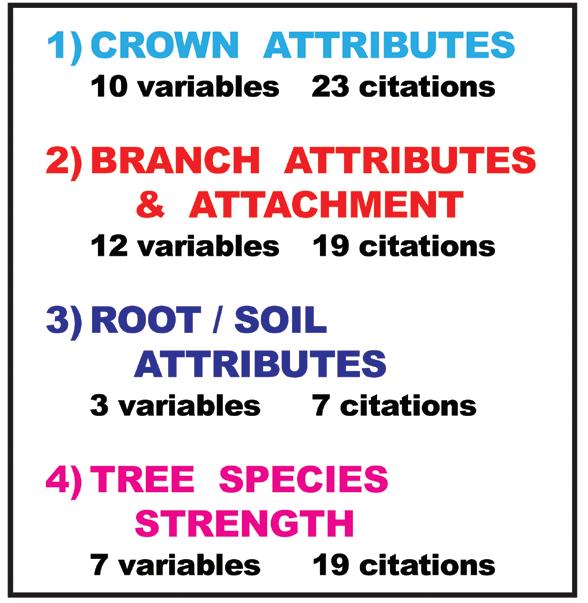
17 minute read
Crown, branch and root damage Tree susceptibility in ice storms
Crown, branch and root damage
Tree susceptibility in ice storms
by Dr. Kim D. Coder, Professor of Tree Biology & Health Care, Warnell School, UGA
Major ice storms cause catastrophic
damage to trees. In reviewing ice storm caused damage in trees, it is possible to formulate some tree health care and management applications to minimize damage from the next major ice storm. Tree damage from ice storms can be summarized into four interrelated components: 1) tree canopy or crown attributes; 2) branch characteristics; 3) roots and soil; and, 4) specific tree species strength attributes. Figure 1 presents these primary components as well as lists the number of specific tree attributes included within each component and number of research studies which cited each component.
Tree crowns/canopy
Tree crown or canopy damage causes shortterm decline, pest issues, potential for further damage in subsequent storms, and an increased probability of mortality. Figure 2 provides one study’s damage classes for crowns and branches. This system uses six damage classes to delineate levels of branch and canopy loss. Note minor and insignificant damage was defined as less than 25% branch and canopy loss.
Asymmetrical crowns
One tree characteristic often cited leading to severe ice storm damage is an asymmetrical crown. The additional load consequences of twisting (torque) on tree crowns tend to accentuate ice and wind loads. Edge tree locations, tree center of mass changes, previous canopy damage, and aspect changes of stem and root plate can all lead to asymmetrical crowns. A highly imbalanced tree canopy, and associated loss of structural resistance to failure, is significant under normal conditions and wind loads. The addition of large amounts of ice and wind loads against tree components less able to flex and fall back against the wind, as well as long duration ice causing creep in wood components, all overload and unbalance tree structure.
Figure 1: Summary of all attributes cited in research studies as leading to tree ice damage. Figure 2: Damage classes established for percent branch and crown loss assessed after an ice accumulation of 1.2 - 2.4 inches.
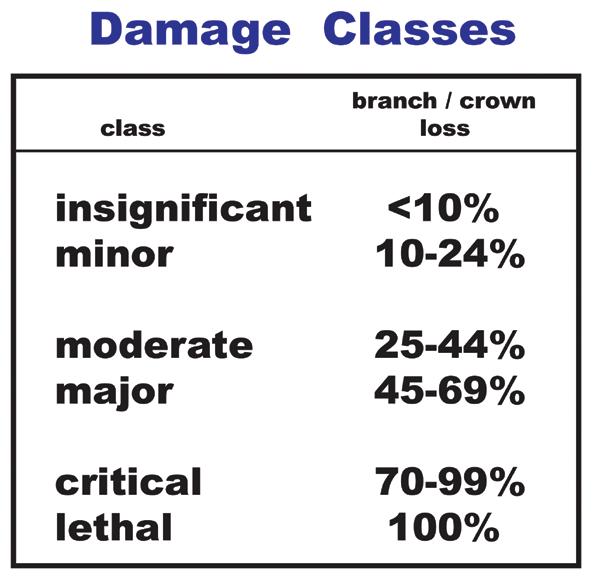
Canopy surface area
Increasing the surface area of a tree crown increases ice accumulation and wind impact area. Many studies cited increasing crown surface area as responsible for increasing tree damage. Large trees, evergreen trees, and trees with many twigs and branches all had increased surface area for ice accumulation.
Figure 3 is a summary conclusion where percent of crown damage provides survival and death expectations within five years. Crown loss and associated short-term mortality across three tree diameter classes are given in Figure 4. Of the five species presented, the largest diameters have the most crown loss but relatively low mortality.
Figure 5 shows tree mortality four years after a major ice storm damaged crowns. Tree mortality becomes large after 50% crown loss and immense after 75% crown loss. Figure 6 presents a tree mortality curve after three years based upon canopy damage. After canopy damage reached 75%, mortality rates increased rapidly. The difference between the healthy green line and the dead red line are trees which decline but did not die. Figure 4: Crown loss and associated shortterm mortality percent for selected species by diameter size class.
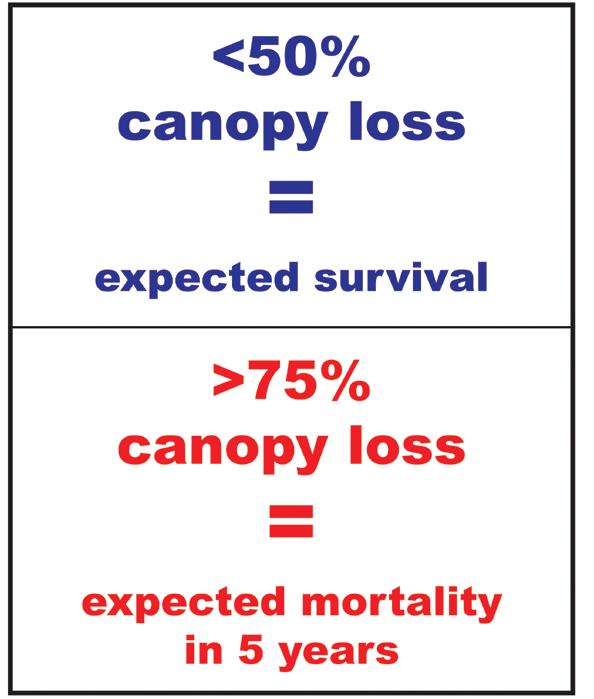
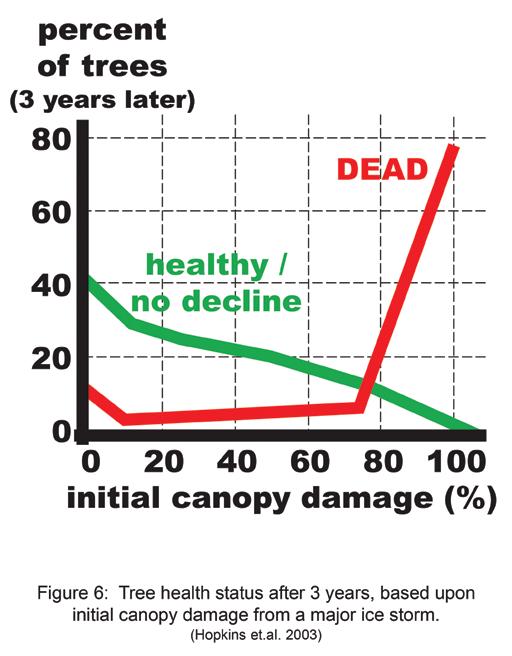


Figure 5: Red pine (Pinus resinosa) mortality four years after a major ice storm damaged various portions of tree crowns.
Figure 6: Tree health status after 3 years, based upon initial canopy damage from a major ice storm.

Figure 7: Three tree health decline classes, three years after a major ice storm, based upon initial canopy damage from ice loads.
Figure 7, expanding upon the same data, shows light, moderate, and heavy decline after three years for trees with various levels of ice storm canopy damage. Note 50% of all trees had light decline when they sustained between 25% and 50% initial ice damage to their canopies.
Crown diameter
One measure of tree interception of freezing rain is crown diameter. The greater diameter of a canopy, the greater ice accumulation and more weight applied to tree structure. A number of studies found increasing crown diameter increased damage from ice storms.
Open grown trees
There is much variation across studies concerning open grown trees isolated from surrounding trees which otherwise could provide mechanical support through shielding or support. Some studies showed open grown trees, with larger crowns and carrying more surface area, had more ice and wind damage. Other studies found open grown trees were more resistant to ice damage because they had structurally adjusted to strong wind loads, and associated stem and branch movement. As in edge trees, additional tree, site and storm variables seem to play a greater role in ice damage than simply the open growth form.
Decurrent shaped crowns
Trees with decurrent or broad rounded crowns were observed to have both more and less ice damage than excurrent forms, depending upon the ice storm. Some studies showed the large size and surface area of a widely spread crown had more ice accumulation and associated damage. Other studies showed there was not any additional damage, or even less damage, due to this crown form.
Excurrent shaped crowns
Trees with excurrent or narrow conical shaped crowns were observed to have both more and less ice damage, depending upon the ice storm. Some studies showed the upright and narrow crown form, and limited freezing rain interception area of an excurrent crown, to have less ice damage than decurrent forms. Alternatively, excurrent crown shape was associated with evergreen conifers, juvenile broadleaves, and ecological pioneer species, all of which have been cited as more susceptible to ice storm damage.
Emergent/dominant crowns
Several studies noted tree canopies extending well above neighboring trees were likely to have more ice damage than other trees. Tree attributes like height, crown surface area and canopy diameter also played a role in this variable. Both ice accumulation and additional wind loading placed more stress and strain on tree structural parts in this crown class.
Codominant crowns
In one study, trees in the codominant crown class, or the common canopy height of a stand, were cited as sustaining more damage than other crown classes. This effect was greatest where large expanses of forest canopy was roughly the same height and tree canopies were close together.
Live crown ratio
Live crown ratio is a common measure of tree health and vitality. The more total height of a tree supporting actively growing, productive branches along its length, the greater live crown ratio. Trees with small live crown ratios have all of their canopy concentrated near the top of a tree. This form of a tree can be considered
“lion’s tailed.” These small live crown ratio trees were cited as having too much canopy too close to the top of a tree, which tended to increase wind sail at the end of a long lever arm, and disrupts diameter growth and taper development to resist bending loads.
Shade intolerance
An older means of classifying life styles of trees has been using tolerance and intolerance of shade. This type of tolerance rating is a proxy for competition tolerance from surrounding trees and other plants. Trees which are shade intolerant are usually ecological pioneer species colonizing open or exposed locations. This species life style classification tends to have more ice damage than more shade tolerant species.
Branches
Poor branch architecture
This attribute is treated as a general statement of why trees sustained damage or failed. In many studies, generally “poor” branch architecture leads to greater ice damage than “better” branch architecture. The components of poor architecture include, but are not limited to, branch angle, number, connections, density of twigs, opposite or whirled node genesis, and forks. In some ways, this category of ice damage causality was a depository for unknown or unclear attributes leading to damage.
Branch sizes damaged in ice storms were examined. Figure 8 presents sizes of branches lost under ice loads combined for beech (Fagus grandifolia) and sugar maple (Acer saccharum). Branch diameter is measured at each branch base. Branches lost from ice loads averaged ~3.1 inches (7.9cm) in base diameter. This suggests a branch diameter to length threshold between smaller loads on smaller branches and larger loads on structurally well-adjusted branches.

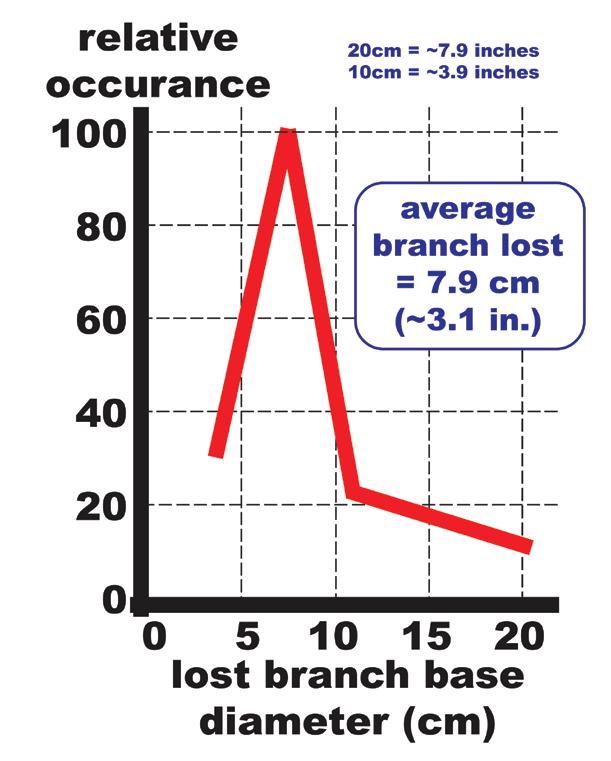
Figure 8: Basal diameter (cm) of branches lost in major ice storm for beech (Fagus grandifolia) and maple (Acer saccharum).

Figure 9: Relative ice load damage to branches by branch base diameter in inces for sound and unsound (i.e., dead/decayed) branch bases. Figure 9 contrasts sound and unsound branch damaged by ice. Unsound branches are damaged more than sound branches until a diameter of 12 inches is exceeded. Note in this study the larger the branch, the less damage.
Branch structural problems
Branches with large decay columns, old injuries, structurally unsound branch connections to supporting tissue, and branches having big cracks and decayed portions were found to be more susceptible to ice damage. Unsound branches were cited numerous times as leading to ice damage. In some cases, ice loading was considered a crown cleaning which removed unsound branches, but at a cost of additional injury to remaining tree tissues.
Figure 10 presents a list of tree species with downed branches observed to be unsound. The average species is silver maple (Acer saccharinum) having 22% of all its downed branches unsound. Note in the case of bitternut hickory (Carya cordiformis), if a branch fails, it was always an unsound branch.
Branch & twig density
Many studies observed trees with dense branching and twigs had more surface area for ice accumulation, more wind drag under ice, and so, more ice damage. Many small branches along primary scaffold branches, and many twigs along branches/branchlets led to greater ice storm damage. A species or individual being “twiggy” was cited as key to ice damage.
Lateral branch number
Several authors observed a greater number of lateral branches generated more ice damage. This increased load on supporting branches and stem, and increased surface area for ice accumulation and wind load impacts, generating more ice storm damage.
Wide branching angles
Trees with horizontal branches, or a branch generated with a wide angle to its supporting axis, were cited as having greater ice storm damage. In the case of ice accumulation, more upright branches, if the branch connection was sound and not in a codominant/fork configuration, handled ice loads better than
horizontal branches. The additional impact of gravity on longer horizontal branches (longer lever arms), coupled with a larger ice deposition surface area, generated significantly more ice damage.
Included bark
Weak branch connections and branch connections with included bark (periderm) led to increased ice storm damage. Included periderm within a branch base clearly decreases branch connection strength, but is also associated with narrow branching angles and forks. Isolating individual causal agents from branches in ice storm damage remains difficult.
Forks/codominant branching
A major structural plague in trees under normal conditions and average wind loads are forks and codominant branches. These branching configurations are inherently less resistant over time to extraordinary wind and ice load conditions. Many branch failures in ice storms were found to have structurally weakened branch unions primarily due to included periderm.
Opposite branching pattern
Of the three normally cited branching patterns in tree species (i.e. whorled, opposite, and alternate), opposite branching was found to generate the most ice damage. The mechanical interactions at one nodal torus, or double branch union area, can be structurally weaker under extraordinary wind and ice loads than alternate branching. Opposite branching can be easily managed through pruning.
Tip-weighted branches
Proportionally long, slender, and lion-tailed branches have been cited as more prone to ice storm damage. Foliage, twigs, and branchlets concentrated near the tip of branches generate significant loading at the end of a relatively long lever arm. Extreme pruning/thinning/cleaning of interior crown volume can leave trees with tip-weighted branches. This growth form disrupts taper development and concentrates ice accumulation at the branch end. Branches which are simply long, compared to other branches in a crown, were also prone to ice damage. Figure 10: Percent of ice storm-downed branches which were unsound.

Stiff branches
An interesting observation regarding trees and ice storm damage is less flexible branches tend to fail. Observation of stiff versus flexible can be subjective, but multiple studies have used this concept in describing ice storm damage. Flexible branches tend to fall back (sag) against ice and wind loads. Stiff branches tend to break under ice and wind loads.
Drooping branching form
One study found trees with drooping branch forms more prone to ice, and associated wind damage, than traditional branching trees. The drooping form under ice loads tends to sag and tear downward, generating significant damage.
Unmagaged trees
It has been made clear through a number of studies, unmanaged, unpruned, and poorly cared for trees are at greater risks of ice storm damage than are trees which have been properly cleaned, dead-wooded, and periodically pruned. Wild and feral trees under urban/suburban and landscape conditions are most prone to ice storm damage. Appropriate tree management can minimize ice damage under many storm conditions.
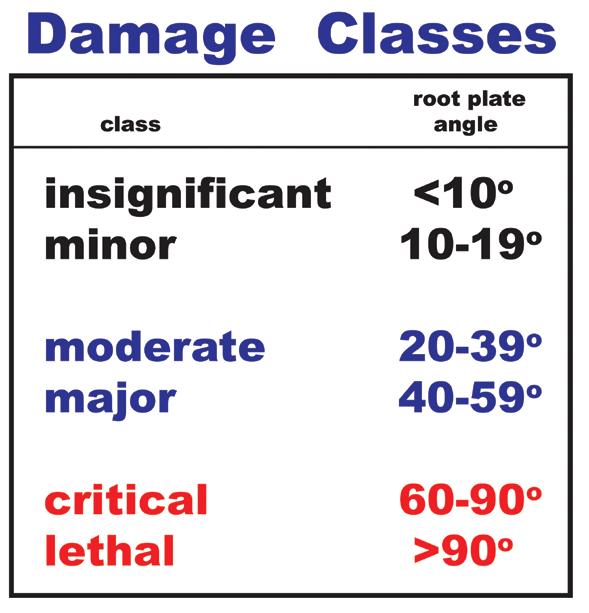
Figure 11: Damage classes established for the angle of root plate tipping in degrees, assessed after ice accumulation of 1.2 - 2.4 inches.

Figure 12: Example of tree species and dominant ice damage forms. Tree root damage is difficult to assess. After an ice storm, new whole tree tilting, progressive lean, visible root plate raising or lowering, and soil cracks or indentations in the soil surface can be evident and are caused by root damage.
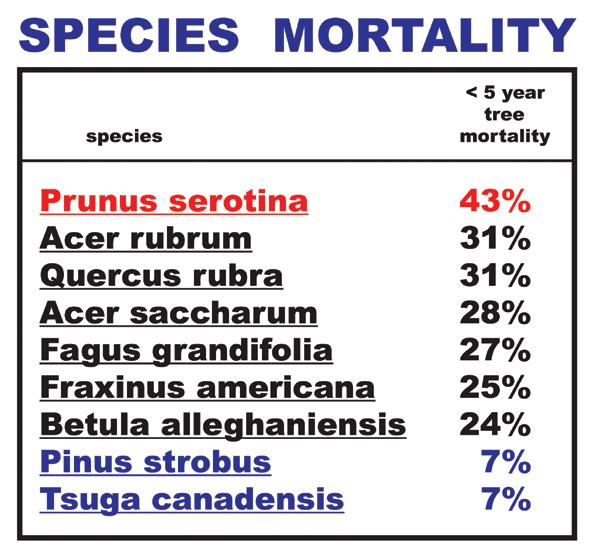
Figure 11 presents a six-level damage classification and the associated root plate angle values. Up to roughly 20o tilt, damage to tree root plates were considered insignificant or minor.
Shallow rooting
Any soil limitation which mechanically or chemically prevents roots from colonizing and holding a large ecologically viable soil volume, leads to increased ice damage. Soil impervious layers, thin soils, high water tables, compaction, and anaerobic conditions near the soil surface all initiate root growth and survival problems. Limited rooting depth was cited as leading to greater ice storm damage.
Saturated soil
Soil with high water contents tend to limit tree root growth and survival. Saturated soil in particular was cited as limiting tree resistance to ice and associated wind damage.
Coarse soils
Sandy or gravelly soils were cited as limiting tree resistance to ice and wind loading. The more coarse a soil, or the greater gravel content, the more likely was ice storm damage.
Tree species
Species
Of all the reasons proposed for trees being either susceptible or resistant to ice storm damage, a general species identification was common among observers. Which species were susceptible, intermediate, and resistant to ice damage tended to be a simple and quick observation. Another publication in this series provides tree species susceptibility ratings across Eastern North America from many studies. A number of observers suggested tree species played a role in ice storm damage.
One observer felt ice and wind loads, as well as other tree and site attributes were much more important than species, so much so as to nearly negate species altogether. Figure 12 provides, for selected tree species, the amount of stand damage and dominant damage from each species sustained. One-third of the basal area of beech (Fagus grandifolia) and paper birch (Betula papyrifera) bent, while white ash (Fraxinus americana) sustained small amounts of damage, but tended to bend and break under ice storms.
Figure 13 shows for selected tree species, the percent mortality in less than five years after ice damage which occurred in this study. Three species had a greater than 30% probability of mortality, while two species (in this case both conifers) had a mortality probability of less than 10% from the same ice storm.
Figure 14 shows how white pine (Pinus strobus) generates additional compression wood in adapting to new structural load conditions due to ice storm loading. Compression wood production is especially noticeable in the 2 - 4 inch (5 - 10cm) dbh classes. More research on specific species reactions to ice storms is needed.
Wood strength
Greenwood strength and load resistance is another tree attribute cited many times as being involved in susceptibility to ice storm damage. The level of inherent wood resistance to bending and failure is greatly debated. A number of studies suggested wood strength did play a small role (<20% of variability) in ice storm damage resistance. Most cited characters of tree species strength included greenwood density, modulus of rupture (MOR), and modulus of elasticity (MOE). Figure 15 presents resistance to bending based upon tree diameter and its greenwood MOR in megapascals. The greater diameter and MOR, the more a tree resists bending in an ice storm. Greater resistance to bending was suggested to reduce ice damage. Other studies concluded inherent greenwood strength and resistance to ice and wind loading had insignificant impacts on ice storm damage. An interesting point emerged from these multiple studies in greenwood resistance to ice damage, whereas ice duration on a tree increases, MOE should become more important. Another publication in this series examined tree susceptibility to ice damage and greenwood resistance in much greater detail.

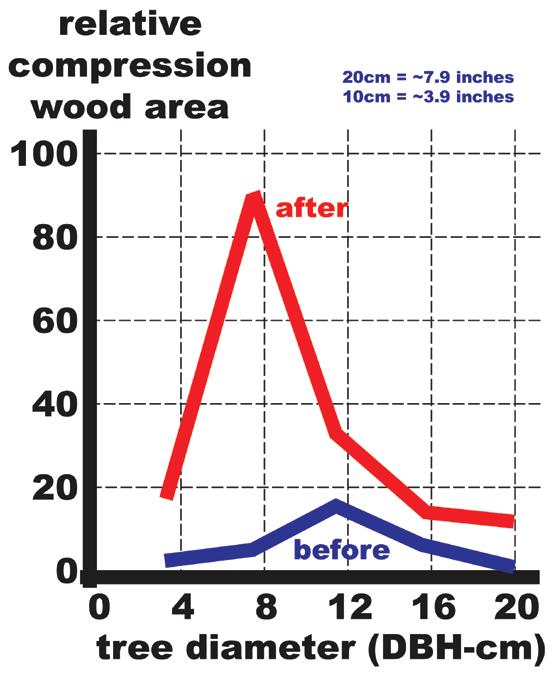
Figure 14: The amount of additional compression wood area generated in white pine (Pinus strobus) as a result of a major ice storm.
Figure 15: Tree resistance to bending by diameter for various wood Modulus of Rupture (MOR in MPa) values.
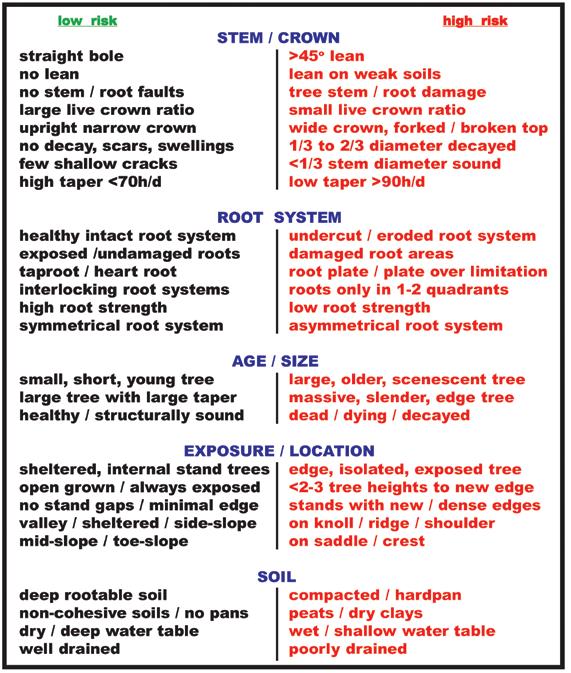
Figure 16: Attributes leading to low and high risks of tree windthrow.
Juvenile wood
Juvenile wood in crown and root tissues can be short fibered and brash, leading to increased ice damage compared with mature wood. Two studies suggested this juvenile wood component led to tree structural failures under ice and wind loads.
Brittle wood
The description of wood qualities can be subjective when noted in the field. The term “brittle” is a descriptor difficult to define. Two studies cited brittle wood as leading to ice storm damage. It is unclear if this brittleness is associated with juvenile wood or compartment faults in mature wood. Wood decay could also play a role in making wood brittle.
Poor compartmentalization
Tree species and individuals which do not effectively defend the frontier between living and dead tissues are said to be poor compartmentalizer. Trees with poor reactions to injury have been categorized as more prone to ice damage. Compartmentalization is also associated with energy storage and health of a tree, as well as past damage and associated compartment lines. This tree attribute needs more study and clarifying to afford its use in ice storms. Among all of tree and site structural components examined across many studies, one observer noted poor health as important. Trees in poor health were most likely to have ice and associated wind load damage. Health suggests past history, and future expectations, associated with the present state of a tree to resist ice damage.
Catastrophic failure risks
Because ice and wind loads place significant structural stress and strain on trees, a quick examination of tree failures under wind load alone is warranted, assuming ice load accentuates most issues.
Figure 16 lists attributes which are associated with both low risk and high risk for tree windthrow. In this case, risk factors are categorized by stem & crown, root system, age and size, exposure, and soil factors. Most of these individual risk factors in the high risk category have been covered previously by ice storm studies. Other high-risk factors are generally mechanical in nature and suggests poor resistance to ice, wind, and/or gravity loading. These high-risk factors listed should be included in any ice storm damage assessment.
Conclusions
For trees, regardless of species for the most part, major ice storms can lead to severe damage. Some forms of damage can be minimized by management of tree and site attributes, but cannot be completely eliminated. Well cared for trees which are healthy, structurally sound, and prepared by tree health care providers are most likely to survive any ice storm. Rare massive ice and wind events, and associated tree damage, cannot be fully anticipated and will not pass without scarring trees and landscapes.
To view this article and all citations online, visit: www.warnell.uga.edu/outreach/publications/ individual/crown-branch-root-damage-treesusceptibility-ice-storms-0










